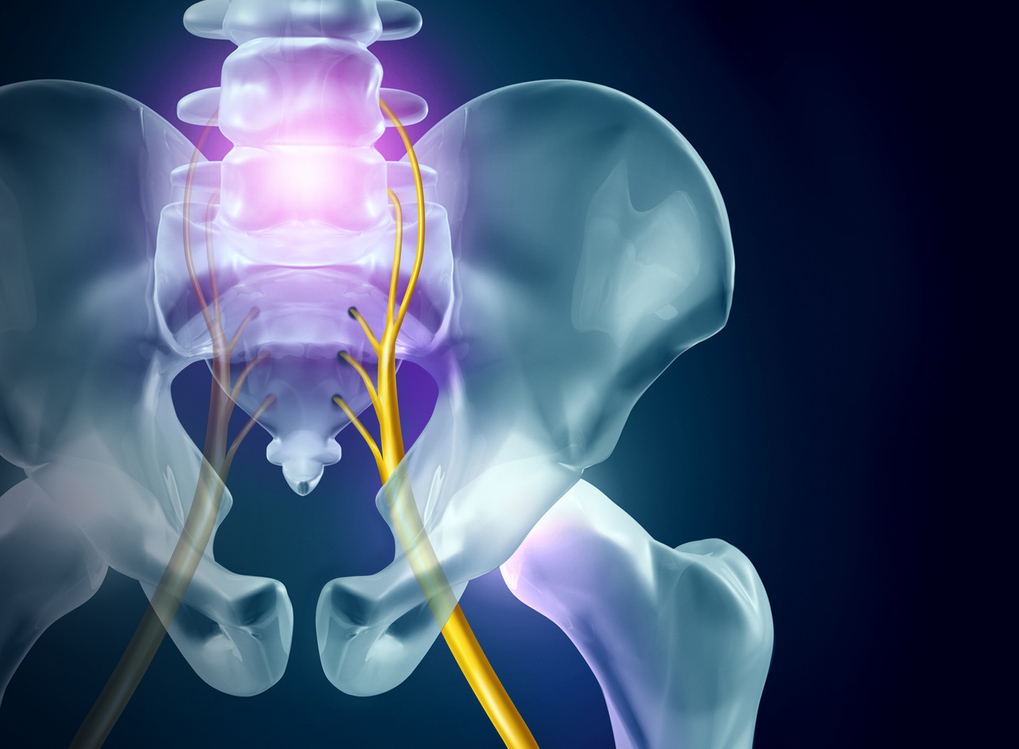By: Active Sports Therapy
Sciatica is a pain syndrome that is caused when the sciatic nerve is compressed by muscles located within the pelvis. The sciatic nerve branches from the lower back, through your hips and buttocks, and then it heads down each leg. A person with symptoms of sciatica might experience the following:
- Lower back pain/lumbar back pain
- Burning or tingling sensations in the leg
- Weakness or numbness in the leg and foot
- Constant pain on one side of the rear
- Shooting pain down the leg
- Hip pain
- A literal pain in the butt that feels worse when sitting
The pain is often one-sided, and extends from one’s lower back down through the leg, and, in some cases a person may feel they symptoms all the way down to their toes. This usually is dependent on where exactly the sciatic nerve is being affected.
Causes of Sciatica
The main causes of sciatica are:
- Age – people experience changes in their spine as they age. Changes such as bone spurs or a herniated disc can cause sciatica.
- Sitting for Long Periods – We live in a culture where many people sit for most of the day, especially those with computer, driving, and desk jobs. Prolonged sitting is often a reason for sciatica and sciatica flare ups.
- Obesity – A person’s weight affects the amount of stress on one’s spine, therefore obesity is a contributing factor.
- Diabetes – People with diabetes are at increased risk for the condition because the condition overall leads to an increased risk of nerve damage in an individual.
Treatments
At Active Sports Therapy, one treatment we use for sciatica is Active Release Therapy/Active Release Techniques®. To help with sciatica, ART can be helpful in that it can break up adhesions and scar tissue, as well as reduce any muscle spasms that are contributing to the problem. This will help to take the pressure off of the neve, allowing the symptoms to ease and often resolve. The practitioner will treat the soft tissue of the area by using a hands-on treatment that uses pressure and movements to work on the tendons, muscles, and fascia associated with your issue.
In addition to Active Release Therapy, acupuncture and cupping can also help relieve the symptoms of sciatica. For a deeper look into sciatica, please visit Dr. Corey Finan's blog, The Many Faces of Sciatica.
What You Can Do to Help With Your Sciatica Problem
- Maintain a healthy body weight.
- Take regular stretching breaks if you have an occupation that requires sitting. Stand up, move around, and employ some stretches that specifically target tight muscles that can lead to sciatic pain such as the piriformis.
- Exercise and working to build strong core and back muscles will improve your posture and in turn allow your body to move and sit in a more proper way, taking some of the pressure off of the sciatic nerve.
- Use ice and heat as needed. Alternating ice and heat can help bring some relief to sciatica sufferers. Remember that ice is anti-inflammatory and heat provides relaxation and increased blood flow. You will need both to combat this pain as opposed to just heat alone.
- Try laying on your back on the floor with a pillow under your knees. The floor is better than laying in a soft bed because of the support that it will provide.
Please give us a call if you are looking for help with your sciatica at 403-278-1405. Our team will be happy to setup an appointment for you. The earlier you start treatment, the sooner you’ll see results!
*This blog is not intended to officially establish a physician-patient relationship, to replace the services of a trained physician, naturopathic doctor, physical therapist or chiropractor or otherwise to be a substitute for professional medical advice, diagnosis, or treatment.


